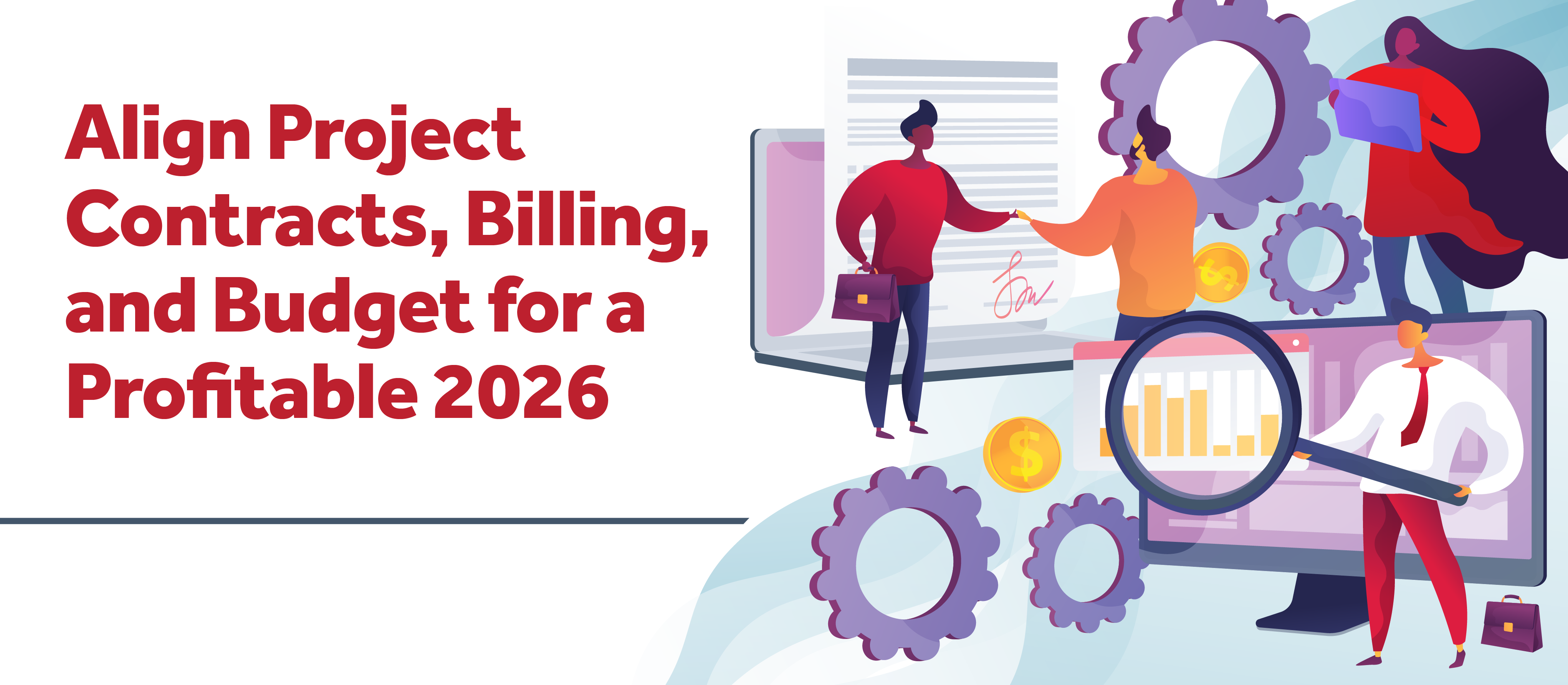Resource Planning with Precision in 2026
 As architecture and engineering (A&E) firms look ahead to 2026, one theme stands out above all others: planning isn’t just about winning projects — it’s about delivering them successfully.
As architecture and engineering (A&E) firms look ahead to 2026, one theme stands out above all others: planning isn’t just about winning projects — it’s about delivering them successfully.
In an industry where deadlines are tight, margins are narrow, and talent is in high demand, the difference between a firm that thrives and one that struggles often comes down to one thing — how effectively it uses its people.
According to the latest Deltek Clarity Report, optimism remains high across the industry, with 84% of A&E firms expecting profits to increase or hold steady next year. But behind that optimism lies a clear challenge: 63% of firms cite talent shortages as their top growth barrier. Combine that with increasingly complex projects and demanding clients, and it’s easy to see why precision planning will define success in 2026.
The firms poised for growth are the ones that go beyond traditional scheduling and forecasting. They’re embracing a more data-driven approach to resource planning — one that ensures the right people are working on the right projects at the right time. And they’re leveraging tools and insights, like Navigational Analysis and Deltek Vantagepoint, to make that level of precision possible.
Why 2026 Demands a Smarter Approach to Resource Planning
The A&E landscape is evolving quickly. Backlogs remain strong — up 9% year-over-year, per the Clarity Report — signaling a steady stream of project opportunities. Yet, with this growth comes new pressure to deliver faster, smarter, and with fewer people.
At the same time, only 41% of firms say they have clear visibility into their future workload and staffing capacity. Nearly one-third still rely on spreadsheets to manage resource planning, creating blind spots that lead to reactive decisions instead of proactive strategies. In this environment, relying on instinct or legacy practices is no longer enough. Firms need a clear, forward-looking view of their workforce — not just to staff current projects, but to ensure they have the talent to deliver future work. The stakes are high: underutilized teams drag down profitability (with the average industry utilization rate sitting at just 58.4%), while overextended staff drive burnout and turnover. In fact, 48% of firms identify workload balancing as their biggest employee retention challenge.
From Reactive to Strategic: Evaluating Your Planning Practices
Before firms can improve their resource planning, they first need to assess where they stand today. Too often, planning is treated as a reactive exercise — a scramble to assign people after a project is won. But strategic planning starts much earlier, aligning business development, project management, and human resources around a shared view of demand and capacity.
Here are key questions every firm should ask as they evaluate their approach:
- Do we have visibility into future workload and staffing needs? Accurate forecasting allows firms to anticipate gaps months in advance — not weeks.
- Are we aligning project pipelines with resource availability? Business development teams should understand when and where capacity exists before pursuing new work.
- How well are we balancing workloads across teams and disciplines? A strategic plan considers not just who is available, but who is best suited for each project phase.
- Are we proactively planning for growth and turnover? Recruitment and training strategies should be informed by the same data driving project staffing.
The Clarity Report reinforces that firms who excel in these areas see tangible results — top-performing firms are 2.5x more likely to use connected planning systems, achieving higher utilization and profitability.
How Navigational Analysis Uncovers Hidden Gaps
This is where Navigational Analysis becomes a powerful ally. By taking a holistic look at how a firm plans and utilizes its people, it uncovers misalignments that might otherwise go unnoticed:
- Staffing inefficiencies: Identifying overstaffed and understaffed roles before they impact profitability.
- Project resourcing conflicts: Spotting overlapping assignments or scheduling bottlenecks that delay delivery.
- Forecasting blind spots: Highlighting where project demand is likely to exceed available talent.
- Process weaknesses: Revealing where planning workflows break down — often at the handoff points between business development, project management, and operations.
When firms use these insights to refine staffing models and project timelines, they gain measurable improvements. According to Deltek Clarity, firms that track forecast accuracy and adjust plans quarterly report 11% higher utilization rates than those that don’t.
The result? A more agile, efficient workforce — one that’s ready to meet 2026’s challenges head-on.
Turning Insight into Action with Deltek Vantagepoint
Insights are only valuable if you can act on them — and that’s where Deltek Vantagepoint comes in. The platform brings resource planning, project forecasting, and talent management into one connected system, giving A&E leaders the visibility they need to make smarter decisions.
With Deltek Vantagepoint, firms can:
- Create data-driven staffing plans that align people with projects based on availability, skills, and profitability.
- Use real-time utilization data to quickly course-correct when workloads shift.
- Improve cross-department collaboration, ensuring business development, project management, and HR work from a shared plan.
- Forecast future resource needs with confidence — enabling better recruitment and training strategies.
Plan for More Than Just Projects — Plan for Success
Winning work is important. But without a plan to deploy your people effectively, winning isn’t enough. In 2026, the most successful A&E firms will be those that treat planning as a strategic discipline — one that’s embedded in every stage of their business, from pursuit to project closeout.
By evaluating current practices, leveraging insights from Navigational Analysis, and investing in tools like Deltek Vantagepoint, firms can ensure they’re not just ready for the projects ahead — they’re ready to deliver them with precision, efficiency, and excellence.
Learn how Deltek Vantagepoint can support your planning.






























